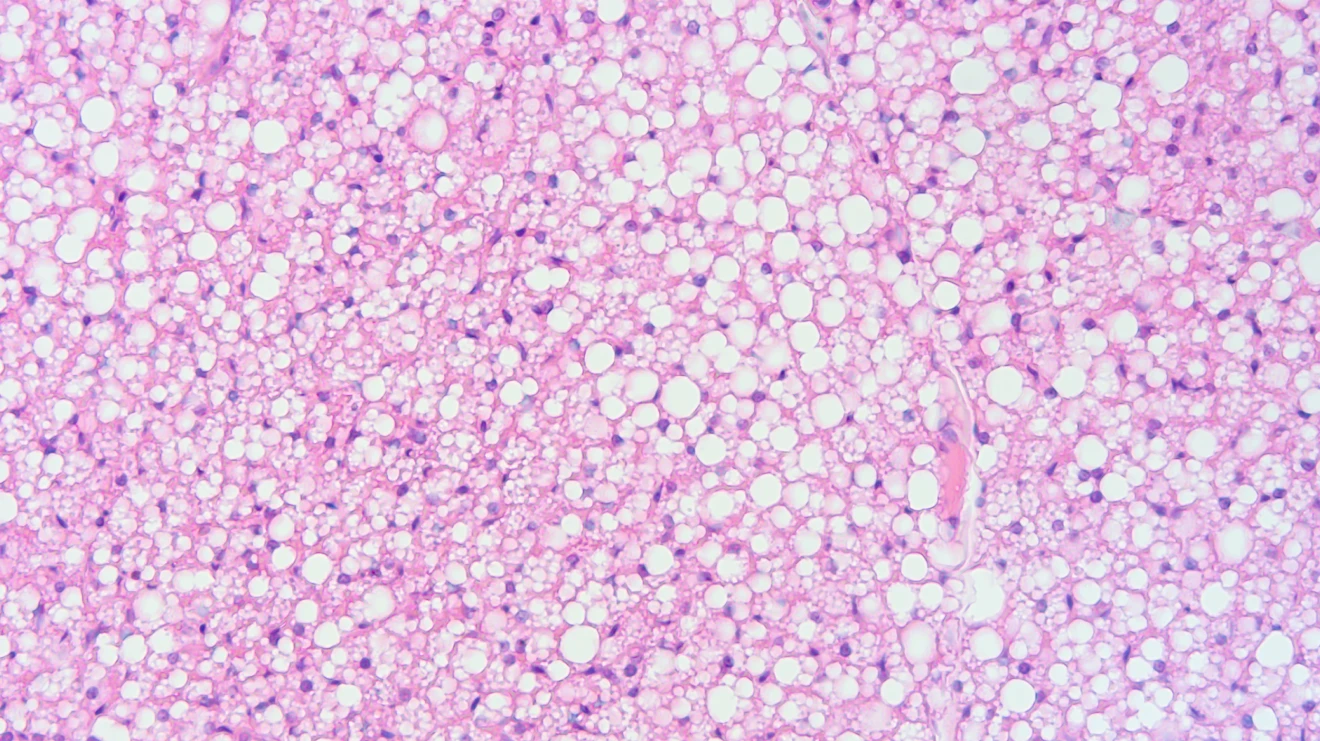Real-world data can improve clinical trials by defining disease endpoints that are used to evaluate treatments. We utilized our real-world dataset to evaluate outcomes for the complex metabolic liver disease MASH, demonstrating that mortality and liver issues are associated with fibrosis severity and identifying clinical endpoints.
Defining disease outcomes using real-world data
Defining disease outcomes using real-world data
Overview

Challenge
While many diseases have known effects on patients, several lack clearly-defined outcomes, especially if formal diagnoses are difficult to measure. A client consulted with NashBio to define disease outcomes for metabolic dysfunction-associated steatohepatitis (MASH), which causes liver inflammation and can lead to liver fibrosis and other complications; MASH develops in a subset of patients with metabolic associated fatty liver disease (MAFLD).
Distinguishing between outcomes in MAFLD and MASH is difficult since a liver biopsy is required to formally diagnose MASH, and these typically aren’t performed clinically due to risks associated with the procedure. NashBio’s real-world dataset offered a unique opportunity to clarify MASH outcomes, which could then be applied to clinical trials to evaluate treatments for this disease.
At a Glance
Enriched phenotypes
40k MAFLD patients
Cohort curation
relevant data for analysis
Biopsy confirmations
by clinical experts
Our Impact
Due to the enriched phenotypes in our dataset, we were able to start with a cohort of over 40,000 participants with MAFLD that was then narrowed down to about 800 MASH participants who were verified using biopsy reports reviewed by our clinical team.
Associated real-world electronic health record (EHR) data for this cohort allowed our data specialists to perform a variety of statistical analyses that demonstrated fibrosis severity is associated with greater risk of liver-related issues, including mortality. We also found that weight-loss surgery patients could serve as a novel population for future analysis, since liver biopsies were often performed during the surgeries.
In addition to understanding more about a complicated disease, our work will improve drug trials for MAFLD and MASH since clinical outcomes and endpoints can be effectively measured.
Nashbio Differentiators

Expert Analysis

Strategic Partners

Clinical Expertise
Our Impact
Due to the enriched phenotypes in our dataset, we were able to start with a cohort of over 40,000 participants with MAFLD that was then narrowed down to about 800 MASH participants who were verified using biopsy reports reviewed by our clinical team.
Associated real-world electronic health record (EHR) data for this cohort allowed our data specialists to perform a variety of statistical analyses that demonstrated fibrosis severity is associated with greater risk of liver-related issues, including mortality. We also found that weight-loss surgery patients could serve as a novel population for future analysis, since liver biopsies were often performed during the surgeries.
In addition to understanding more about a complicated disease, our work will improve drug trials for MAFLD and MASH since clinical outcomes and endpoints can be effectively measured.
Nashbio Differentiators

Expert Analysis

Strategic Partners

Clinical Expertise

Leveraging multimodal data to analyze cardiomyopathy

Developing predictive diagnosis algorithms


